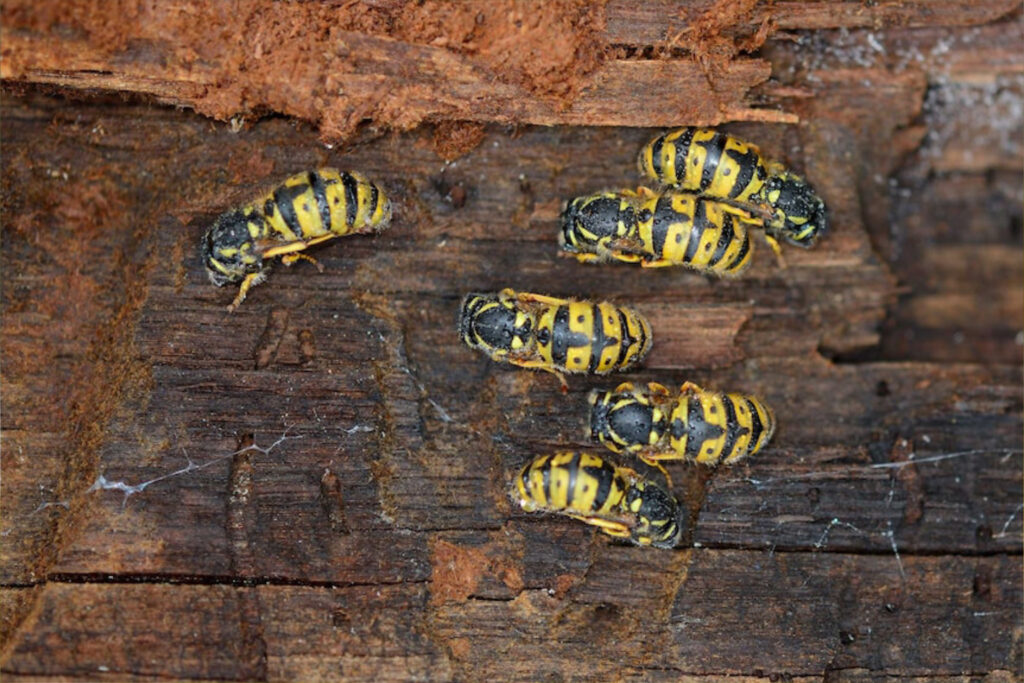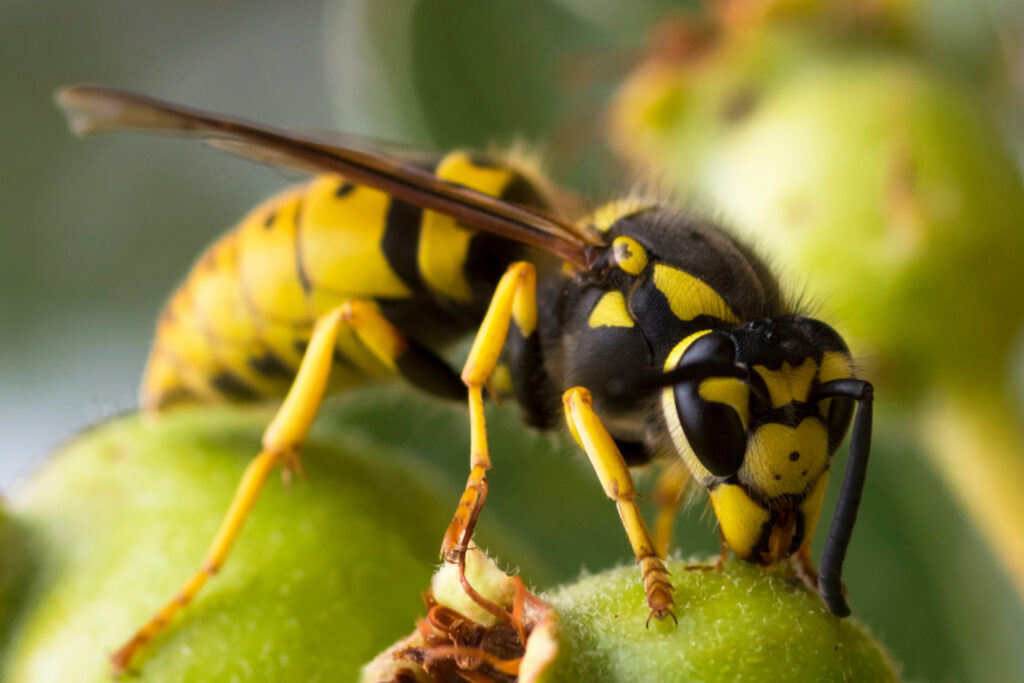Introduction
As summer arrives, so do the buzzing nuisances of blowflies and European wasps. While both are attracted to meat and carrion, understanding the lifecycle of the European wasp can help us better manage these pests.

The Lifecycle of the European Wasp:
The lifecycle of the European wasp consists of several distinct stages, each playing a crucial role in their population dynamics:
1. Spring Emergence:
In spring, European wasp queens emerge from hibernation. These queens are larger than workers (up to 20mm long) and are responsible for establishing new colonies. They begin by constructing small paper nests made from chewed wood fibre in sheltered locations such as tree hollows, wall cavities, or underground burrows.
2. Colony Establishment:
Once the nest is established, the queen lays eggs that hatch into sterile female workers. These workers take on the tasks of foraging for food, caring for the queen and developing larvae, and foraging for wood fibres and water to make the papery material they use to construct and expand the nest.
3. Summer Activity:
As summer progresses, European wasp colonies reach their peak activity. Worker wasps scavenge for food sources rich in sugars and proteins, such as ripe fruits, carrion, and sugary substances like nectar and soft drinks. This is the season when interactions with humans often increase as wasps search for food near outdoor gatherings and picnic areas. The foragers which are attracted to meat don’t feed on it themselves, but cut out chunks take back to the nest to feed the developing larvae.
4. Reproductive Phase:
During late summer and autumn, the colony’s focus shifts from worker production to the production of reproductive individuals. Male wasps and new queens are produced. Mating occurs, and fertilized queens seek out suitable overwintering sites, under bark or inside crevices to hibernate until the following spring, completing the lifecycle.

Effective Pest Control Strategies:
Managing European wasp numbers requires a different approach for each phase of the lifecycle.
Spring is the ideal time to implement control measures targeting the queens that are establishing new nests. Deliberately going out to look for, and destroy, queens as they hibernate or emerge from hibernation can reduce population explosions later in the season. They are often found in crevices among stored firewood or under bark, and once they have emerged, they fly heavily around in search of resources for the new nest. Each queen removed is equivalent to a whole nest of workers removed later in the season. Some people have also reported success in removing queen European Wasps by baiting a wasp trap with a mixture of honey, water, vanilla essence and dishwashing detergent.
Later in the season, trapping can also help reduce the number of worker wasps. Traps baited with protein-based attractants can attract and capture foraging wasps, reducing their numbers in outdoor spaces. This will not eliminate all of the wasps however, because those workers foraging for sugars, fibre or water may not be attracted to these baits.
The EnviroSafe European Wasp Bait targets those workers that are looking for prey or meat to take back to the nest to feed the larvae. Apart from removing these foragers, their loss to the nest means that less food will be taken back to developing larvae, with possible consequences for the next generation of queens. Queens that are not well fed as larvae may end up with reduced fat reserves, and this may impact their ability to overwinter and establish nests the following year.
While it can be tempting to use a home-made insecticidal bait to try to kill nests, it is important to note that the off-label use of insecticides intended for other purposes (for example, flea control on dogs) is not legal without a permit from the APVMA. Insecticides need to be rigorously assessed to be fit for purpose, and while an insecticide may be safe for one purpose, that doesn’t mean it is safe when used in a different way. Insecticides are potentially damaging to natural ecosystems. Fipronil, a common insecticide used in flea treatments, is persistent in the environment and can have unintended negative long-term consequences due to its toxicity to beneficial organisms such as termites and ants (Pisa et al. 2015; Tingle et al. 2003).
Locating and removing or destroying established nests, especially as autumn approaches, can prevent the emergence of new queens and disrupt the lifecycle. However, caution must be exercised when dealing with nests to avoid provoking defensive behaviour from the colony. There is also the possibility of trapping the newly emerged queens with traps baited with apple juice just before they start to hibernate for the winter.
Conclusion:
Understanding the lifecycle of the European wasp provides valuable insights into effectively managing this unwanted introduced pest. By implementing targeted interventions tailored to each stage of the lifecycle, we can minimize the impact of these stinging insects on our outdoor activities and our ecosystems to ensure a safer environment for all.
References
Pisa, L. W., V. Amaral-Rogers, L. P. Belzunces, J. M. Bonmatin, C. A. Downs, D. Goulson, D. P. Kreutzweiser, C. Krupke, M. Liess, M. McField, C. A. Morrissey, D. A. Noome, J. Settele, N. Simon-Delso, J. D. Stark, J. P. Van der Sluijs, H. Van Dyck, and M. Wiemers. 2015. ‘Effects of neonicotinoids and fipronil on non-target invertebrates’, Environ Sci Pollut Res Int, 22: 68-102.
Tingle, C. C., J. A. Rother, C. F. Dewhurst, S. Lauer, and W. J. King. 2003. ‘Fipronil: environmental fate, ecotoxicology, and human health concerns’, Rev Environ Contam Toxicol, 176: 1-66.


